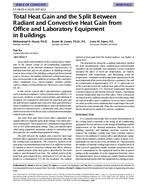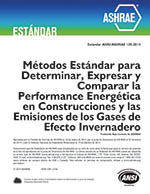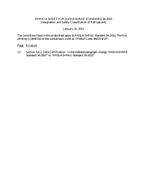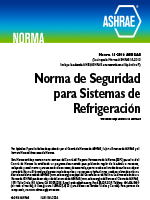Description
An accurate determination of the cooling load is important in the proper sizing of air-conditioning equipment. Improvements on the thermal insulation characteristics of building materials and recent advances in building envelope systems have reduced the building cooling load from external sources. However, the number of internal cooling load sources have increased due to the addition of various office and laboratory equipment (e.g., microcomputer, monitor, printer, copier, scanner, overhead projector, microwave oven, incubator, etc.).
In this article, typical office and laboratory equipment such as desktop computers (with a Pentium and a 486DX2-33 processor), monitors, a copier, a laser printer, and a biological incubator are evaluated to determine the total heat gain and the split between radiant and convective heat gain from these items. In addition, two standard objects with well-defined radiant heat loss characteristics, a heated flat slab, and a heated sphere are used to verify the accuracy of measurement and data reduction procedures.
The total heat gain from tested office equipment was significantly less than the name plate ratings even when operated continuously. The actual power consumption ranged from 14% to 36% of the name plate ratings. Thus, care must be taken when using equipment nameplate ratings in estimating total heat gain for air-conditioning equipment sizing.
The split between the radiant and convective heat load from the office equipment is also an important factor affecting the cooling load calculations. The convective portion of the heat gain is an instantaneous load since it is added to room air by natural or forced convection without time delay, whereas the radiant portion of the heat gain is absorbed by the room surfaces and dissipated over time. The radiant portion of the total heat gain ranged from a minimum of 11% for the laser printer to a maximum of 57% for the incubator. The radiant portion of heat gain from the heated surfaces was higher at about 60%.
The potential for using the scanning radiometer method for field measurements where sophisticated environmental chambers are not available was examined. Factors examined included the effect of room air temperature, air motion, nonuniform wall temperature, and fluctuating room air temperature. Nonuniform wall temperature appeared to be the most important of the room-related factors examined. One wall at a temperature of approximately 10°F (6 °C) above the rest of the room decreased the radiant heat gain of the measured items by approximately 27%. Room air temperature had only a modest impact as did normal room air motion. Fluctuating room air temperature had very little effect. These conclusions are based on the conditions used for the tests in this project that are typical of office space conditions. However, there certainly are other possible room conditions that would impact the radiant heat loss more drastically. Thus, the conclusions presented herein should not be applied to extreme conditions.
Units: Dual
Citation: Symposium, ASHRAE Transactions, 1998, Vol 104, pt. 1A, San Francisco
Product Details
- Published:
- 1998
- Number of Pages:
- 10
- File Size:
- 1 file , 170 KB
- Product Code(s):
- D-7950




